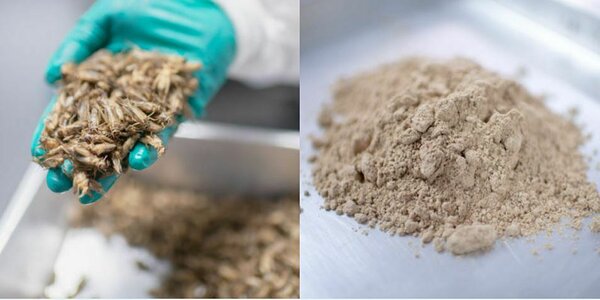How is cricket flour produced?
We are relatively sure that most people can imagine how the wheat flour is produced or what needs to be done so that we could enjoy a nice piece of chicken on our dinner table. We might not think about these topics daily, but we do have more or less of an idea of the process as these food items have been on our tables for a long time. But is the cricket flower produced? Cricket flour is the superfood that enriches our bars and crispbreads and we wanted to shed some light on the process in this post.
Reasons to add cricket flower into your diet
The world’s population is rapidly growing. According to many scientists, the resources of planet Earth will not be enough to be feeding the growing population very soon if we keep up with our current consumption. Both land and water will soon be lacking. The food that requires the most resources to produce is meat. At the same time, the consumption of meat and meat products is constantly growing. The protein needed for us to stay strong and healthy can also be obtained from plants, but plant protein is not as well absorbed and it is necessary to monitor it closely to get all essential amino acids from food. Eating meat, you don’t need to pay much attention to the composition of amino acids as it contains all essential amino acids by default.
In crickets, all 9 essential amino acids are also present, as well as vitamin B12. Compared to the meat industry, however, the cultivation of crickets requires less water, less land, less food, and besides it generates much fewer greenhouse gases.
How is cricket flour made?
Compared
to the traditional meat industry, the production of crickets and therefore
cricket flour is a very resource-efficient, quick, and clean process.
Especially because insects for human food consumption are a novelty food in
this part of the world, the process is very carefully controlled by the
governments. In Europe, it is not allowed to grow crickets for human
consumption at home and of course, the bugs jumping around behind the furnace
are not caught for human consumption either.
- Cricket farm is built up as a closed and controlled system that protects the crickets from possible negative environmental influences.
- Both humidity and temperature are strictly controlled.
- The saying “You are what you eat” is clearly visible for crickets because the taste of the end product is highly dependable on what they are fed. Basically, they eat all vegetables, grains, nuts, etc. and if grown at home, this would be a good way to reduce food waste – potato peels, apple cores, and other food that would end up in the compost, but is still fresh is ideal for crickets. However, in industrial settings the feed specifically designed for crickets is used.
- It takes around 4 weeks for the egg to grow into adult cricket.
- Adult crickets are frozen – this makes their conversion into food as humane and painless as possible. The crickets do not have a central nervous system so they don’t feel the pain.
- The crickets are then washed, roasted, and finally ground to cricket flour.
Benefits of adding cricket flour to the human diet
Crickets are mainly composed of protein and this is exactly the reason why cricket flour is increasingly found in various superfood bars and other health products. It is easy to add it to different baked goods substituting some of the traditional wheat flour without changing the taste, but increasing the protein content of the final product. It can also be added to smoothies and porridges.
In addition to protein, the crickets also contain many vitamins and minerals. 100 grams of pure cricket flour contains:
440 kcal
4 carbohydrates (0 of which sugars)
17.8 fat
66 protein
23 µg vitamin B12
433 mg calcium
168 mg iron
17 mg sodium
In our product range, two types of superfood bars – Bug Challenge and Raw Power, and two types of crispbreads are enriched with cricket flour.


